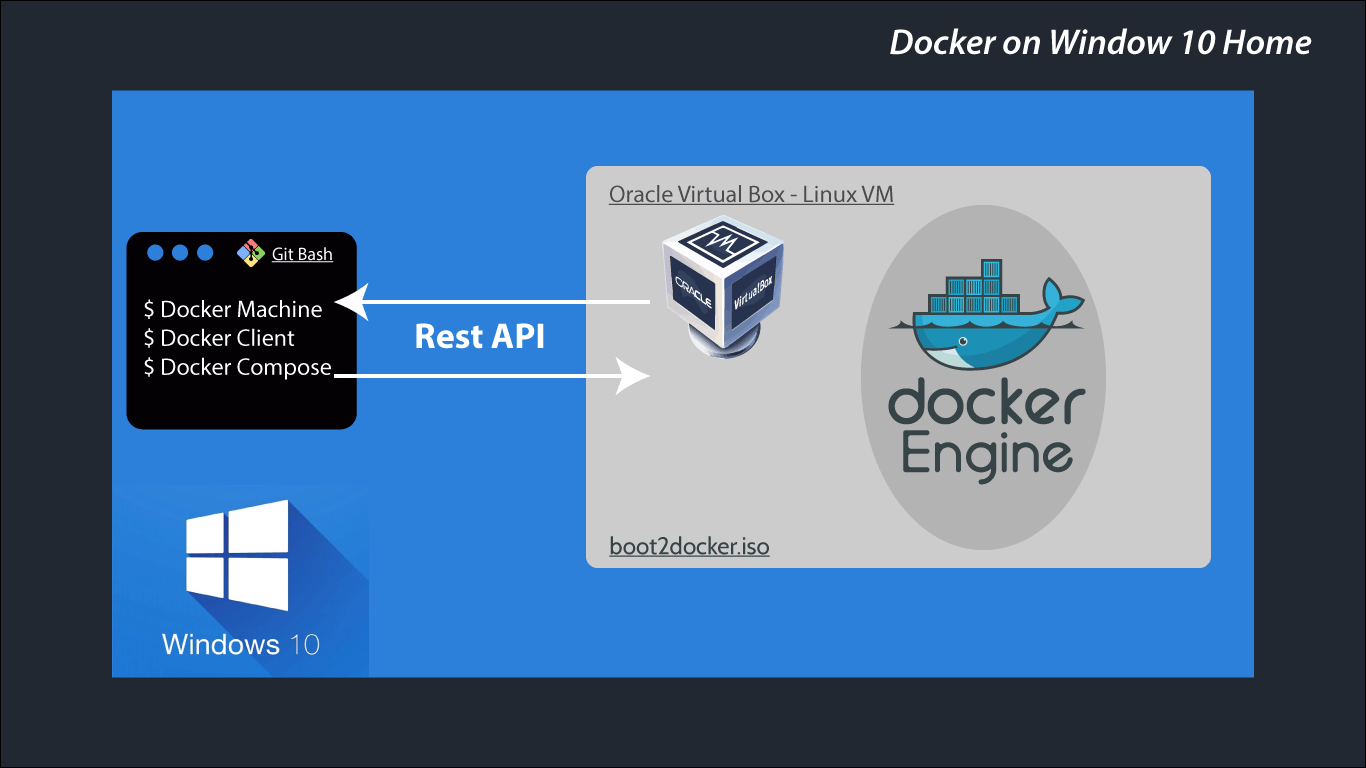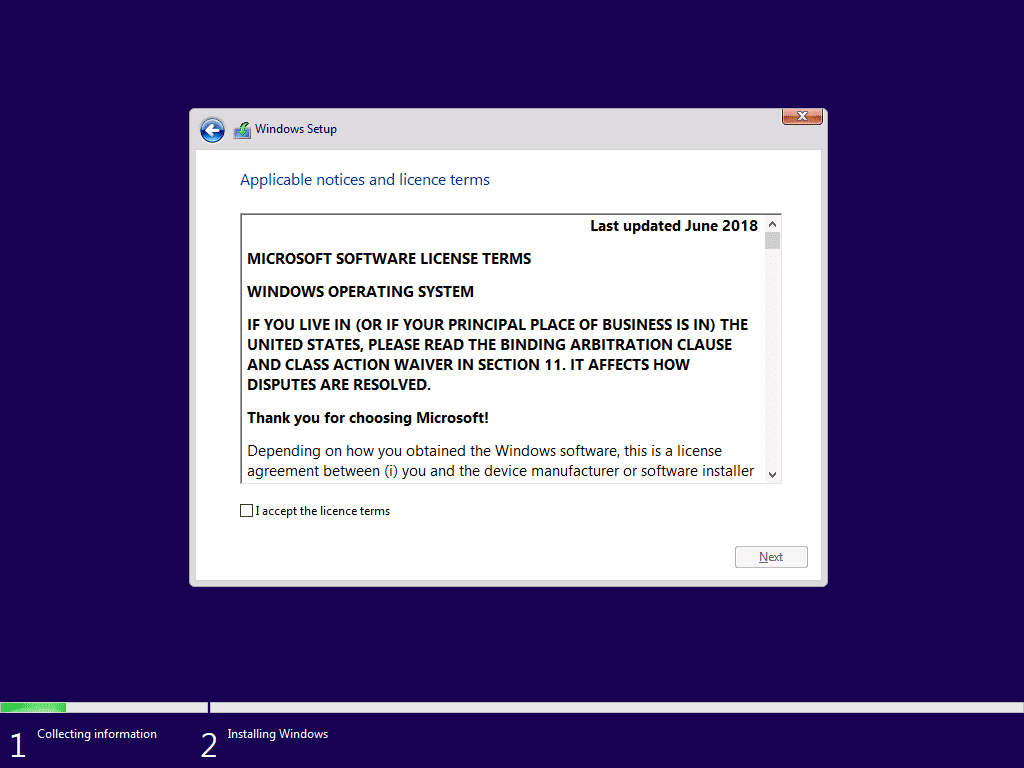Install Docker Windows Powershell
- Install Docker Compose Windows Powershell
- Install Docker On Windows Using Powershell
- Windows 10 Install Docker Powershell
- Powershell Install Docker Windows Server
Install IIS from command line windows 10. As Windows come with inbuilt IIS thus we don’t need to download it, however, by default it will not enable, therefore, we install this Internet Information Services feature either by enabling it using the GUI method that is via “Turn Windows features on or off” window or using the Powershell command line. If you want to clean up your containers then it turns out PowerShell has the same syntax as bash: docker rm -vf $(docker ps -qa) Visual Studio 15 In the meantime install Visual Studio 15 Community edition so that we can create an ASP.NET application.
This article explains how to install the Azure Az PowerShell module usingPowerShellGet. These instructions work on Windows,macOS, and Linux platforms.
The Azure Az PowerShell module is preinstalled in AzureCloud Shell and in Docker images.
The Azure Az PowerShell module is a rollup module. Installing it downloads the generally availableAz PowerShell modules, and makes their cmdlets available for use.
Requirements
Note

PowerShell 7.x and later is the recommended version of PowerShell for use with the Azure AzPowerShell module on all platforms.

The Azure Az PowerShell module works with PowerShell 7.x and later on all platforms. AzurePowerShell has no additional requirements when run on PowerShell 7.x and later.
- Install thelatest version of PowerShell available foryour operating system.
To check your PowerShell version, run the following command from within a PowerShell session:
Installation
Using the Install-Module cmdlet is the preferredinstallation method for the Az PowerShell module. Install the Az module for the current user only.This is the recommended installation scope. This method works the same on Windows, macOS, and Linuxplatforms. Run the following command from a PowerShell session:
Other Installation Options
While PowerShell 7.x is the recommended version of PowerShell, and Install-Module is therecommended installation option, there are additional installation options if needed.
Installation on Windows PowerShell
The Azure Az PowerShell module is also supported for use with PowerShell 5.1 on Windows. To use theAzure Az PowerShell module in PowerShell 5.1 on Windows:
- Update toWindows PowerShell 5.1.If you're on Windows 10 version 1607 or higher, you already have PowerShell 5.1 installed.
- Install .NET Framework 4.7.2 or later.
- Make sure you have the latest version of PowerShellGet. Run
Install-Module -Name PowerShellGet -Force.
Offline Installation
In some environments, it's not possible to connect to the PowerShell Gallery. In those situations,you can install the Az PowerShell module offline using one of these methods:

- Download the Azure PowerShell MSI. Keep in mind that the MSI installeronly works for PowerShell 5.1 on Windows.
- Download the modules to another location in your network and use that as an installation source.This method allows you to cache PowerShell modules on a single server or file share to be deployedwith PowerShellGet to any disconnected systems. Learn how to set up a local repository and installon disconnected systems withWorking with local PowerShellGet repositories.
- Save the module with Save-Module to a file share,or save it to another source and manually copy it to other machines.
Install Docker Compose Windows Powershell
Sign in
To start working with Azure PowerShell, sign in with your Azure credentials.
Update the Azure PowerShell module
To update any PowerShell module, you should use the same method used to install the module. Forexample, if you originally used Install-Module, then you should useUpdate-Module to get the latest version. If youoriginally used the MSI package, then you should download and install the new MSI package.

The PowerShellGet cmdlets cannot update modules that were installed from an MSI package. MSIpackages do not update modules that were installed using PowerShellGet. If you have any issuesupdating using PowershellGet, then you should reinstall, rather than update. Reinstalling isdone the same way as installing. Ensure you use the Force parameter with Install-Module whenreinstalling.
Unlike MSI-based installations, installing or updating using PowerShellGet does not remove olderversions that may exist on your system. To remove old versions of the Az PowerShell module from yoursystem, see Uninstall the Azure PowerShell module. For more information aboutMSI-based installations, see Install Azure PowerShell with an MSI.
Troubleshooting
Here are some common problems seen when installing the Azure Az PowerShell module. If you experiencea problem not listed here,file an issue on GitHub.
Az and AzureRM coexistence
Warning
We do not support having both the AzureRM and Az modules installed for PowerShell 5.1 on Windowsat the same time.
In a scenario where you want to install both AzureRM and the Az PowerShell module on the samesystem, AzureRM must be installed only in the user scope for Windows PowerShell. Install the AzPowerShell module for PowerShell 7.x on the same system.
Important
Because Az PowerShell modules now have all the capabilities of AzureRM PowerShell modules and more,we'll retire AzureRM PowerShell modules on 29 February 2024.
To avoid service interruptions, update your scripts that use AzureRMPowerShell modules to use Az PowerShell modules by 29 February 2024. To automatically update yourscripts, follow the quickstart guide.
Proxy blocks connection
If you get errors from Install-Module that the PowerShell Gallery is unreachable, you may bebehind a proxy. Different operating systems and network environment have different requirements forconfiguring a system-wide proxy. Contact your system administrator for your proxy settings and howto configure them for your environment.
PowerShell itself may not be configured to use this proxy automatically. With PowerShell 5.1 andlater, configure the PowerShell session to use a proxy using the following commands:
If your operating system credentials are configured correctly, this configuration routes PowerShellrequests through the proxy. To have this setting persist between sessions, add the commands to yourPowerShell profile.
To install the package, your proxy needs to allow HTTPS connections to https://www.powershellgallery.com.
Provide feedback
If you find a bug in the Azure Az PowerShell module,file an issue on GitHub. To provide feedbackfrom within a PowerShell session, use theSend-Feedback cmdlet.
Next Steps
To learn more about the Azure Az PowerShell modules and their features, seeGet Started with Azure PowerShell. If you're familiar with AzurePowerShell and need to migrate from AzureRM, seeMigrate from AzureRM to Az.
Estimated reading time: 7 minutes
You can run Compose on macOS, Windows, and 64-bit Linux.
Prerequisites
Docker Compose relies on Docker Engine for any meaningful work, so make sure youhave Docker Engine installed either locally or remote, depending on your setup.

On desktop systems like Docker Desktop for Mac and Windows, Docker Compose isincluded as part of those desktop installs.
On Linux systems, first install theDocker Enginefor your OS as described on the Get Docker page, then come back here forinstructions on installing Compose onLinux systems.
To run Compose as a non-root user, see Manage Docker as a non-root user.
Install Compose
Follow the instructions below to install Compose on Mac, Windows, Windows Server2016, or Linux systems, or find out about alternatives like using the pipPython package manager or installing Compose as a container.
Install a different version
The instructions below outline installation of the current stable release(v1.28.6) of Compose. To install a different version ofCompose, replace the given release number with the one that you want. Composereleases are also listed and available for direct download on theCompose repository release page on GitHub.To install a pre-release of Compose, refer to the install pre-release buildssection.
Install Compose on macOS
Docker Desktop for Mac includes Compose alongwith other Docker apps, so Mac users do not need to install Compose separately.For installation instructions, see Install Docker Desktop on Mac.
Install Compose on Windows desktop systems
Docker Desktop for Windows includes Composealong with other Docker apps, so most Windows users do not need toinstall Compose separately. For install instructions, see Install Docker Desktop on Windows.
If you are running the Docker daemon and client directly on MicrosoftWindows Server, follow the instructions in the Windows Server tab.
Install Compose on Windows Server
Follow these instructions if you are running the Docker daemon and client directlyon Microsoft Windows Server and want to install Docker Compose.
Start an “elevated” PowerShell (run it as administrator).Search for PowerShell, right-click, and chooseRun as administrator. When asked if you want to allow this appto make changes to your device, click Yes.
In PowerShell, since GitHub now requires TLS1.2, run the following:
Then run the following command to download the current stable release ofCompose (v1.28.6):
Note: On Windows Server 2019, you can add the Compose executable to $Env:ProgramFilesDocker. Because this directory is registered in the system PATH, you can run the docker-compose --version command on the subsequent step with no additional configuration.
Test the installation.
Install Compose on Linux systems
On Linux, you can download the Docker Compose binary from theCompose repository release page on GitHub.Follow the instructions from the link, which involve running the curl commandin your terminal to download the binaries. These step-by-step instructions arealso included below.
For alpine, the following dependency packages are needed:py-pip, python3-dev, libffi-dev, openssl-dev, gcc, libc-dev, rust, cargo and make.
Run this command to download the current stable release of Docker Compose:
To install a different version of Compose, substitute
1.28.6with the version of Compose you want to use.If you have problems installing with
curl, seeAlternative Install Options tab above.Apply executable permissions to the binary:
Note: If the command docker-compose fails after installation, check your path.You can also create a symbolic link to /usr/bin or any other directory in your path.
For example:
Optionally, install command completion for the
bashandzshshell.Test the installation.
Alternative install options
Install using pip
For alpine, the following dependency packages are needed:py-pip, python3-dev, libffi-dev, openssl-dev, gcc, libc-dev, rust, cargo, and make.
Compose can be installed frompypi using pip. If you installusing pip, we recommend that you use avirtualenv because many operatingsystems have python system packages that conflict with docker-composedependencies. See the virtualenvtutorial to getstarted.
If you are not using virtualenv,
pip version 6.0 or greater is required.
Install as a container
Compose can also be run inside a container, from a small bash script wrapper. Toinstall compose as a container run this command:
Install pre-release builds
If you’re interested in trying out a pre-release build, you can download releasecandidates from the Compose repository release page on GitHub.Follow the instructions from the link, which involves running the curl commandin your terminal to download the binaries.
Pre-releases built from the “master” branch are also available for download athttps://dl.bintray.com/docker-compose/master/.
Pre-release builds allow you to try out new features before they are released,but may be less stable.
Upgrading
If you’re upgrading from Compose 1.2 or earlier, remove ormigrate your existing containers after upgrading Compose. This is because, as ofversion 1.3, Compose uses Docker labels to keep track of containers, and yourcontainers need to be recreated to add the labels.
If Compose detects containers that were created without labels, it refusesto run, so that you don’t end up with two sets of them. If you want to keep usingyour existing containers (for example, because they have data volumes you wantto preserve), you can use Compose 1.5.x to migrate them with the followingcommand:
Install Docker On Windows Using Powershell
Alternatively, if you’re not worried about keeping them, you can remove them.Compose just creates new ones.
Uninstallation
To uninstall Docker Compose if you installed using curl:
Windows 10 Install Docker Powershell
To uninstall Docker Compose if you installed using pip:
Powershell Install Docker Windows Server
Got a “Permission denied” error?
If you get a “Permission denied” error using either of the abovemethods, you probably do not have the proper permissions to removedocker-compose. To force the removal, prepend sudo to either of the abovecommands and run again.
Where to go next
compose, orchestration, install, installation, docker, documentation